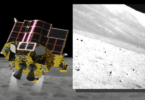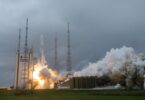Sergei Krikalev, a Russian cosmonaut, was supposed to be sent to the Mir space station by Soyuz in 1991. It was against the dissolution of the Soviet Union, the mission became a dream scary for the plane. Originally marked as a five-month mission, Sergei returned to a changed Earth after nearly a year.
According to Discover Magazine, Krikalev was accompanied by Soviet scientist Anatoly Artsebarsky and British scientist Helen Sharman. They left the Baikonur Space Center in Kazakhstan with the main responsibility of repairing the station. After eight days of orbiting, Sharman returned home with the two crew members already on board, leaving only Krikalev and Artsebarsky. Although everything was going well in the field work, the USSR began to show signs of political conflict. Suddenly, there were strong signs that the sovereign government was on the verge of collapse.

During the summer, many Soviet countries began to push for independence. One of those countries was Kazakhstan. To appease its government, Moscow gave a Kazakhstani astronomer a place on Mir, replacing an experienced astronaut who would have relieved Krikalev. As he was not trained for long-term work, Krikalev had to stay on board until further notice. When Gorbachev stepped down as supreme leader before the USSR was officially dissolved in December 1991, Krikalev received information about his return to the world. During his mission, Krikalev completed 5,000 orbits around the Earth. According to EurAsian Times, a group of three cosmonauts were assigned to join the Mir crew when Krikalev’s long stay ended.

Russia’s long-term spaceflight put financial pressure on the country. In order to organize the funds, Russia decided to give space station holidays to Western countries. With the growing talk of selling Mir, concerns arose among the crew, but they stopped because if they had left Mir, it would have meant the end of the Space Station.
In March 1992, Krikalev finally received news that he would be replaced and could return to Earth. He landed near Arkalyk, in the independent Republic of Kazakhstan. When he got there, his home in Leningrad was now St Petersburg in Russia.

What was originally allotted as a five-month space schedule unfortunately extended to almost a year for Krikalev, who spent 312 days away from Earth, costing his life his own. When he returned home, he was found to have signs of serious damage to his physical health, including muscle and bone weakness. But the truly sad part of Krikalev’s story is that he went on to become the last resident of the Soviet Union and was never able to return to his former home in Leningrad, now known as and St.Petersburg. However, his dedication to staying on the Mir station despite the odds and his commitment to the Soviet space program showed true patriotism and professionalism.






